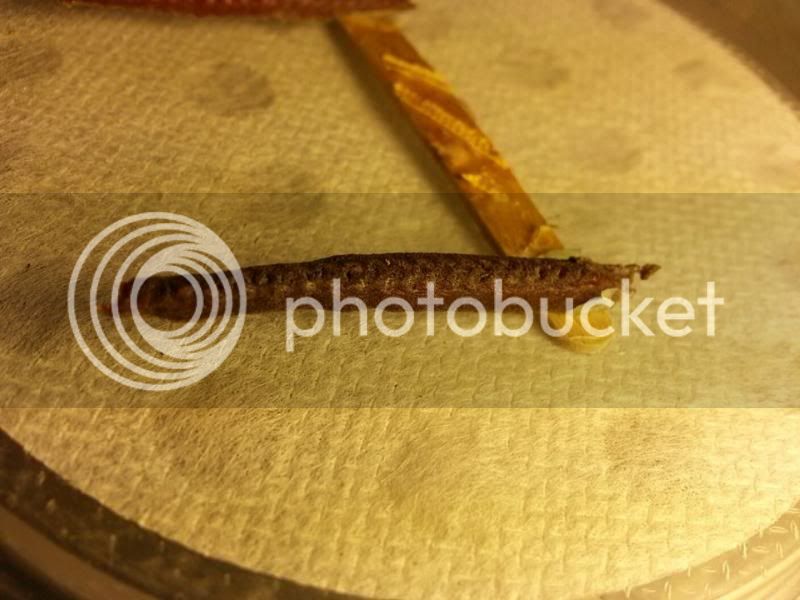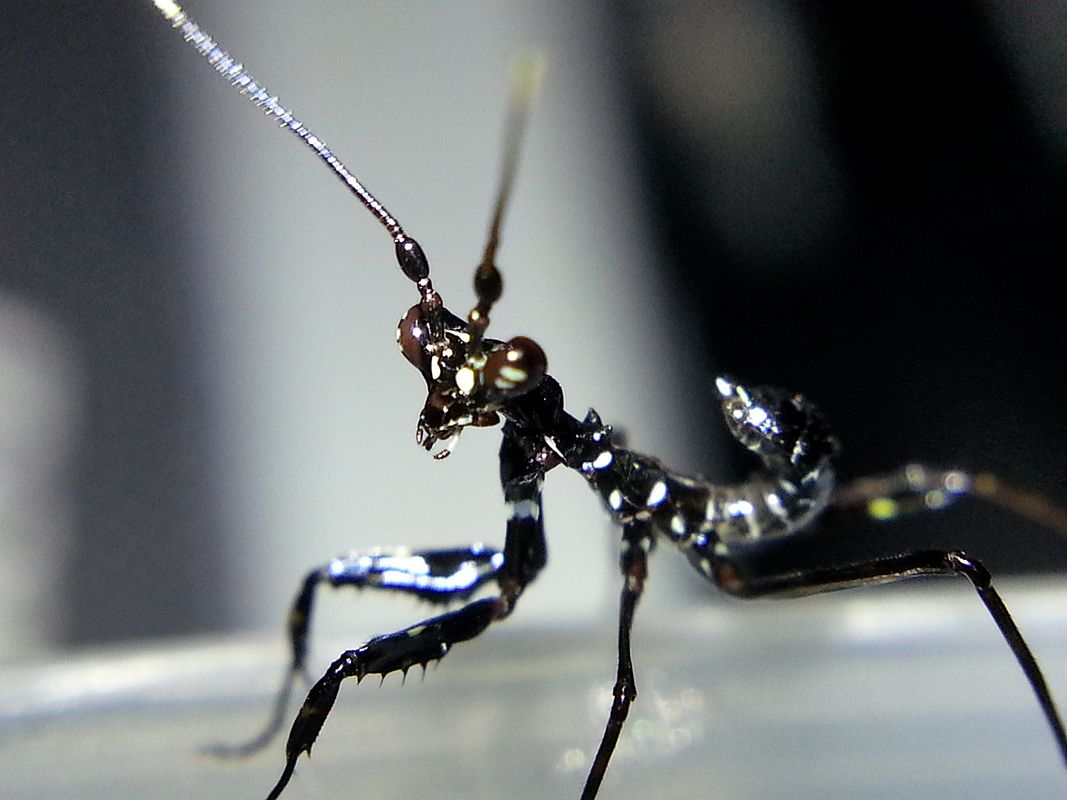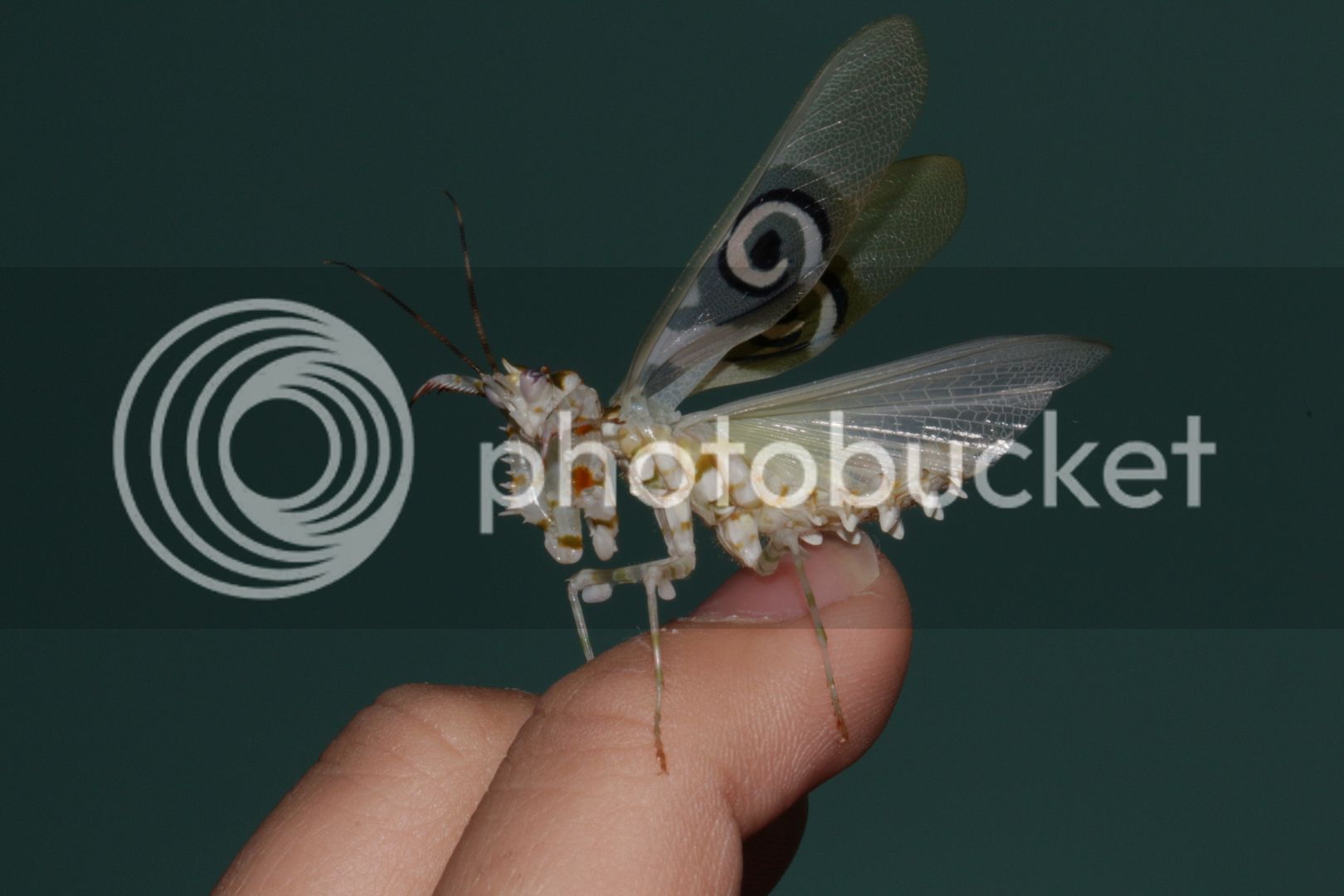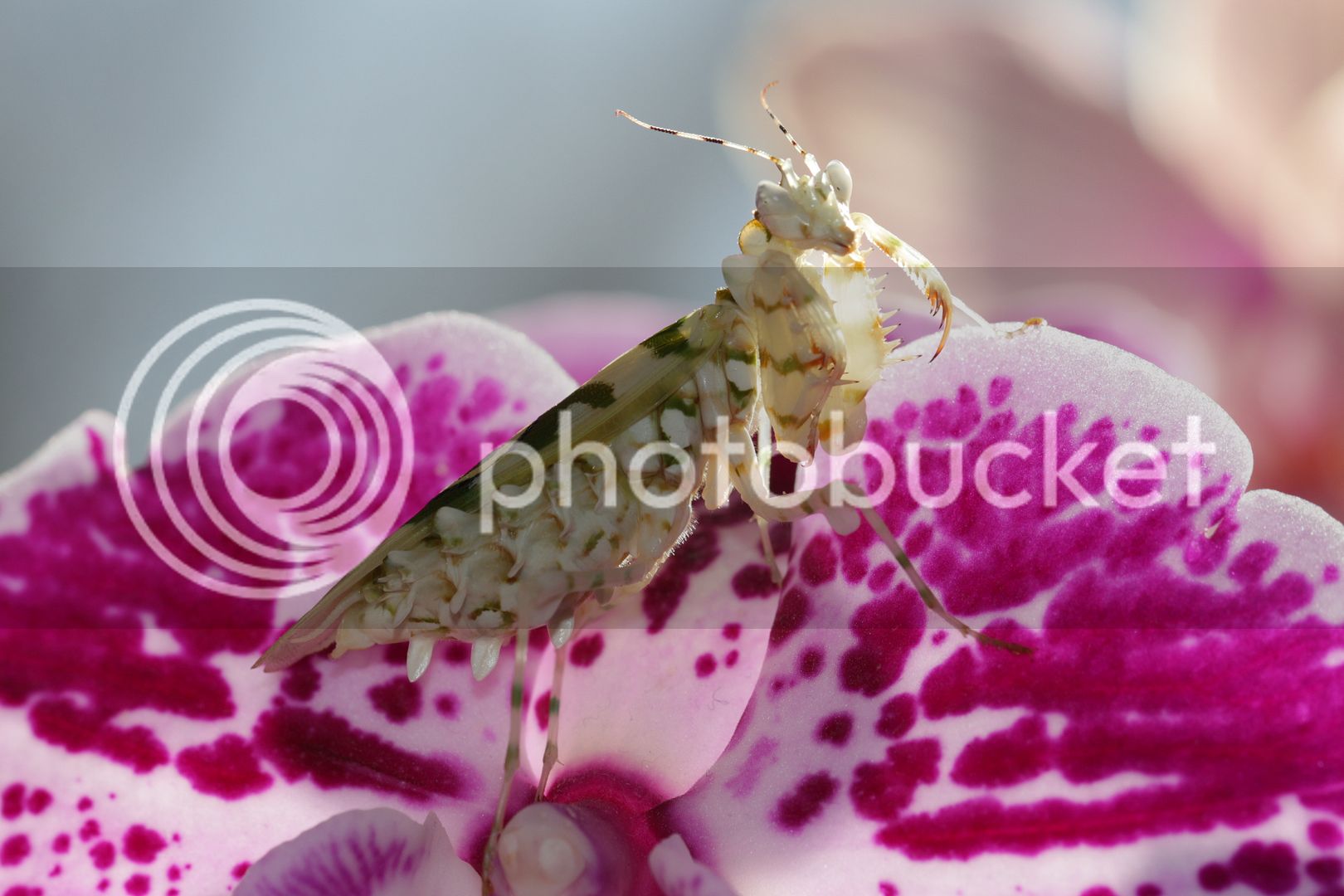Pseudocreobotra wahlbergii (Spiny Flower Mantis)
Introduction:Spiny flower mantids resemble species in the genus Creobroter, but are much more extravagant. The abdomen is covered with spines and the legs have lobed extensions. Older nymphs and adults are ornamented with green and pink splashes on a background of white. Tiny nymphs are blue-black with white spots. The giant eyespot on the abdomen and later tegmina is brightly colored and spiral shaped. Adults are are around one and a half inches in length.(Orin)
- Native range
- Difficulty level: beginner, intermediate, advanced, or expert
- Rate of growth and factors involved
- Longevity
- Molting observations
- Degree of activity
- Degree of aggression or timidity
- Propensity to cannibalize
- Dynamics of threat display
- Temperature range and humidity levels
- Type and size of enclosure(s) used.
- Substrate or lack thereof
- Cage furnishings, e.g. molting surfaces, perches, décor, plants, etc.
- Communal housing if applicable
Nymphs and adults seldom have trouble attacking prey that is half their mass or more. Spiny Flower mantids are far less willing to chase after prey than Creobroter.(Orin)
- Type and size of prey used and/or refused for various instars
- Quantity and frequency of feedings
Males and females can be very difficult to differentiate until the later instars because color obscures the abdominal margins.(Orin)
- Time needed from last molt to copulation
- Tips: give us your methodology.
- Tips for inducing copulation and fecundity
- Tips for inducing female to lay oothecae
Oothecae are stick like; one and a half inches by a quarter of an inch. Thirty to sixty nymphs hatch after a month.(Orin)
Health Issues:
All stages are very hardy but the first couple instars desiccate rapidly while well-fed adult females require good ventilation or they suffer respiratory failure.(Orin)
- Additional Observations: pertinent information which doesn't neatly fit anywhere else.
- Photos: up to five may be posted at the bottom of the completed template. Please limit these photos to no more than one of an ootheca, two of nymphs(different instars), one of an adult female, and one of an adult male.

(photo: SilentDevil)
L1 nymph

(photo: SilentDevil)
L2 nymph

(photo: SilentDevil)
adult male:

(photo: SilentDevil)
adult female

(photo: SilentDevil)
Contributors: jamurfjr, Orin, SilentDevil
Last edited by a moderator:



